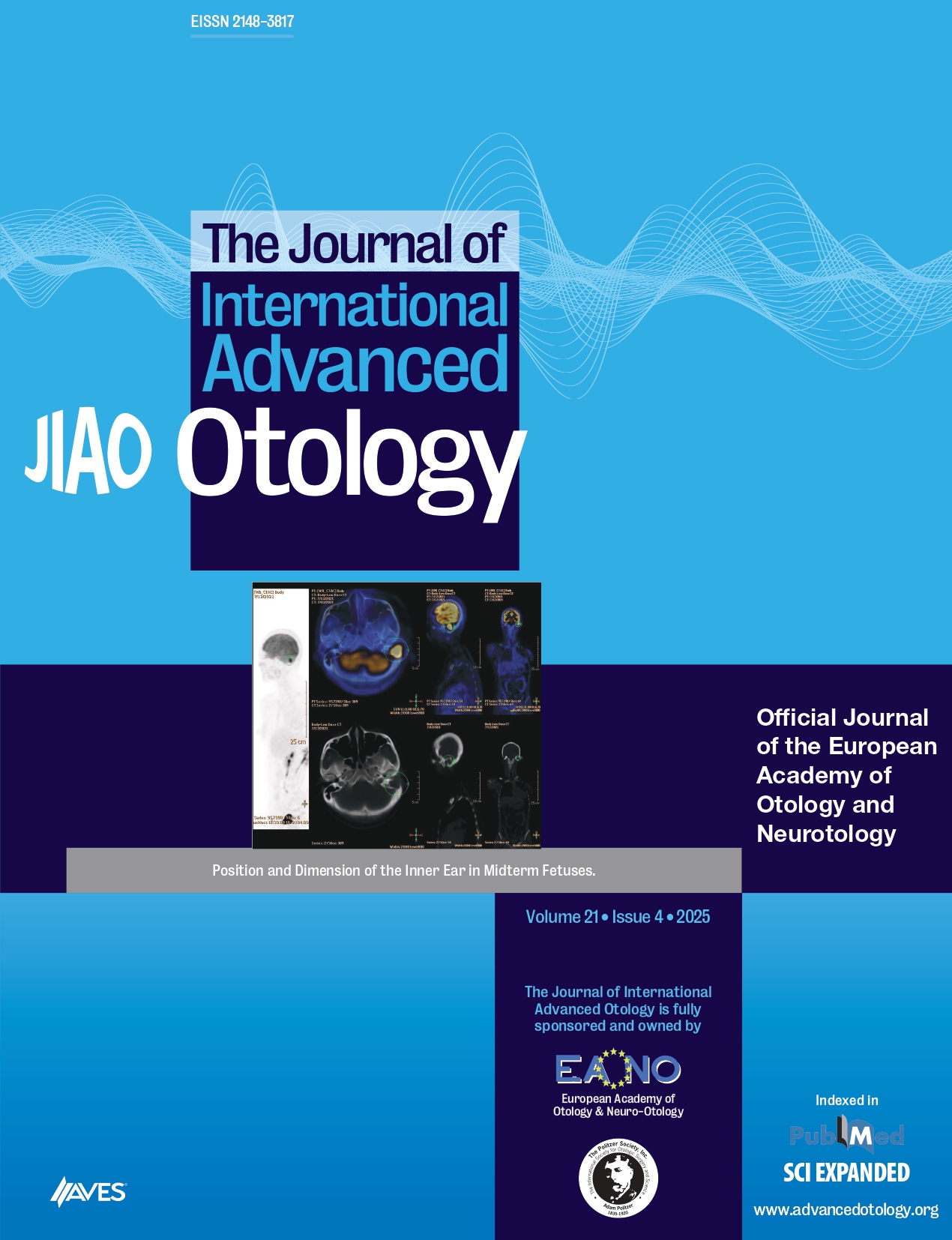In this case report, the air-conducted cervical vestibular evoked myogenic potentials (AC cVEMP) test was only sensitive for the left superior semicircular canal dehiscence (SCD), even though the contralateral SCD was of equal length (2.5 mm). Furthermore, a lysis of the processus lenticularis incudis caused a real conductive hearing loss in the left ear. A diminished left AC cVEMP was thus expected, but the opposite was shown (increased corrected amplitude, lowered detection threshold). The patient only experienced hearing loss, so middle ear surgery was performed to repair the lysis. The postoperative AC cVEMP showed a further “uncovering” of the SCD with increased corrected amplitude on the left but no vestibular symptoms. The significance of an SCD should be interpreted with caution, even when the AC cVEMP and the imaging are significant. Furthermore, AC cVEMPs should not be considered as evidence for the absence or presence of conductive hearing loss.
Cite this article as: Sluydts M, Bernaerts A, De Foer B, Zarowski A, van Dinther J, Vanspauwen R, et al. The Sensitivity of the Cvemp-Test in Detecting A Superior Semicircular Canal Dehiscence and the Influence of a Coexisting Incudal Lysis: A Case Report. J Int Adv Otol 2020; 16(1): 123-6.



.png)
.png)